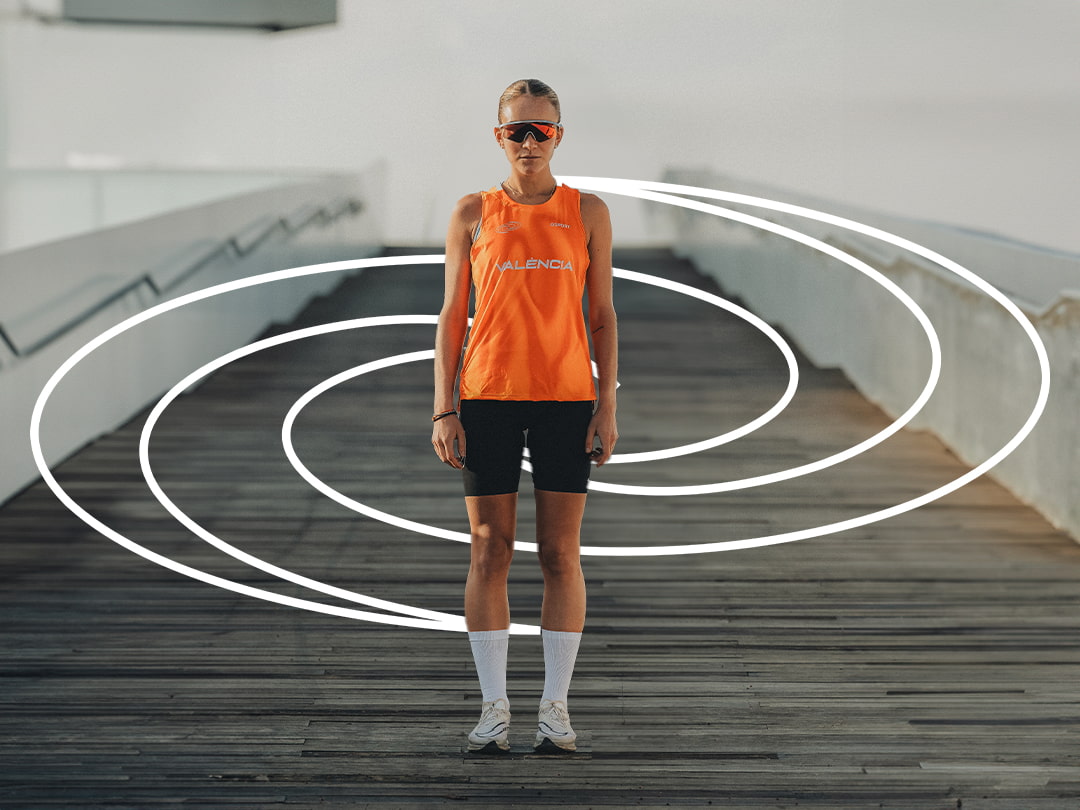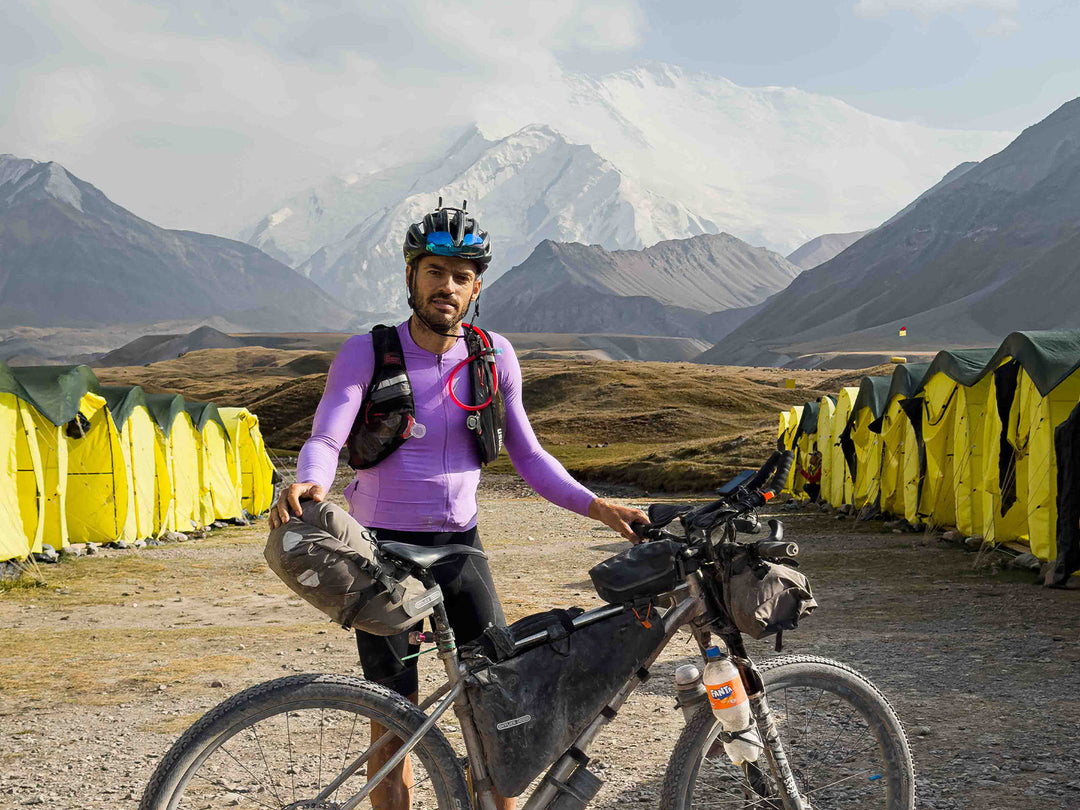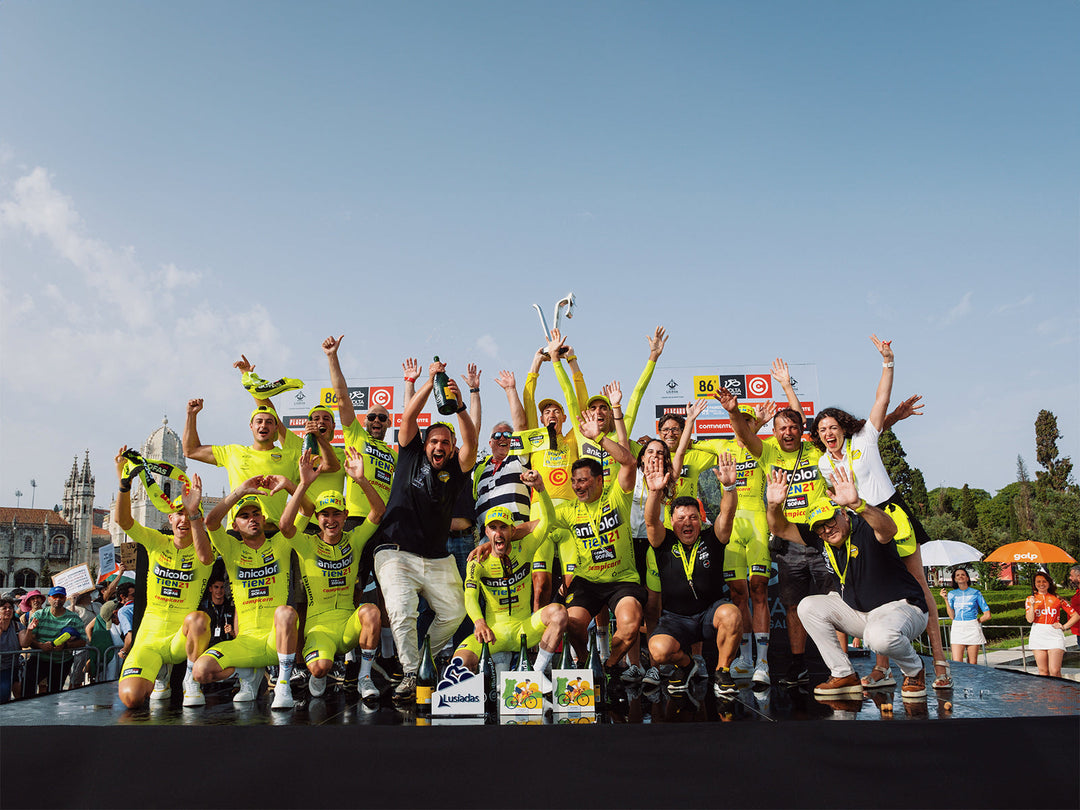BASAJAUN NO ES UNA SIMPLE CARRERA DE GRAVEL

In collaboration with Ibai Fradejas
Basajaun is not just an endurance gravel race, from the start it becomes a survival journey, an adventure. I decided to live it to the fullest, sleeping as little as possible (5h) and with the least amount of things on the bike.
From the lushest forests of Urbasa and Irati (Basajun's home), you descend to the most arid and barren plains through Bardenas, returning to the banks of the Ebro river before facing the Sierra de la Demanda, a mountainous massif in "land de cameros” of transhumants who face very harsh lands in terms of climate, to culminate surrounding the Pico San Lorenzo and return to the forests of the Basque Country, through the Izki Natural Park.
FROM IDEA TO PRACTISE
I decided to face this challenge in pairs together with Virgini Cancellieri, a cyclist from the Orbea Factory Team. We knew each other very little, just to coincide in some event with Orbea, it was a risky decision, since neither of us knew how the other pedaled, and we would have to do it together for many hours, without mentioning the confidence and rapport necessary to compete in pairs in a test of these characteristics, in which you are going to have good and very bad times for about three days.
Our initial approach was to try to get as close as possible to kilometer 506 Calahorra without sleeping. According to my calculations of 13km/h (stops included) this would mean about 38 hours from the departure on Saturday at 08:00, to arrive at 22:00 on Sunday 31. Which would allow us to rest for about 4 or 5 hours to face the remaining 280 kilometers in one go, trying to finish in exactly 3 days, or what is the same 72 hours.
I always say that in these tests you have to anticipate almost everything, but the important thing is to adapt to unforeseen events, and believe me that they will always arise.

Finally, the hours of sleep were approximately the 5 or 6 that we had estimated, although the total time standing still was 18 hours. The reality of the race was that we arrived in Calahorra at 07:00 on Monday the 1st, that is, 9 hours late as planned, but we had also rested more than expected, so we would face what was left of us without stopping to sleep.
First stop, kilometer 254, Villanueva de Aezkoa:
We arrived at the town around 00:00, we stopped at a bar that was open and where the previous runners had finished with all the food stocks, a coffee with milk and a sobao courtesy of the waitress , we went to sleep at the fronton of the town, where there were already other participants resting, we were there from approximately 01:00 to 02:30, and we decided to start the march in the middle of the night.
Second stop, kilometer 307, Urroz-Villa:
It was dawn time and we slept for about an hour, on a bench in a rest area on a shoulder at the entrance of the town, we thought that with what we had slept at the previous stop, but the truth is that we were quite weak and decided to stop again.
Nap time, kilometer 417, Mélida:
Mélida is the last town before crossing the "desert" of the Bardenas Reales, it is 4:00 p.m. and the sun hits our GPS very hard, marks temperatures above 40º C, we decided to stop and lie down in the shade in a park and let the sun go down until 7:00 p.m. to go into the desert, I think it was one of the best decisions not only because we avoided the heat that cost him days later to leave a runner rescued by helicopter for heat stroke, but because we enjoyed one of the most beautiful sunsets I have ever experienced.
Third stop, kilometer 501, San Adrián:
Dormimos we slept from 03:00 to 06:00 in the arcades of the town square, we had the need to take off our shorts after 43 hours with the position.
THE RESULT
We finished the test in 74 hours (48h and 50m and 16km/h in movement), 2 hours more than expected and without major shocks, in 3rd position in pairs, being the first mixed pair, and Virginia the first woman to cross the finish line. And although like any ultradistance event you compete against yourself, I am proud of the result, we have not physically forced on any climb, we have gone at a fluid pace, in which we were comfortable and making sure on each descent so as not to compromise the mechanics, Proof of this is that we have not suffered any kind of breakdown or puncture.
I think that apart from the finisher reminder and the map I took a good friend with me, because spending 3 days living together in survival mode I think it makes you get to know the other person in depth and create a certain bond.

MORAL
More than 10 days have passed since I finished the race, I still have several fingers on my hands with loss of sensitivity, I have forgotten the pain in my ass, the heat, the exhaustion after pushing the bike in the bikepushing sections, the leg pain, cold at dawn, thirst, hunger, sleep... But I still remember the sunset in Bardenas Reales, the conversations with participants from all over the world, the satisfaction at the end...
That is why I believe that these experiences must be lived at least once in a lifetime.
Other Srtories:










Leave a comment